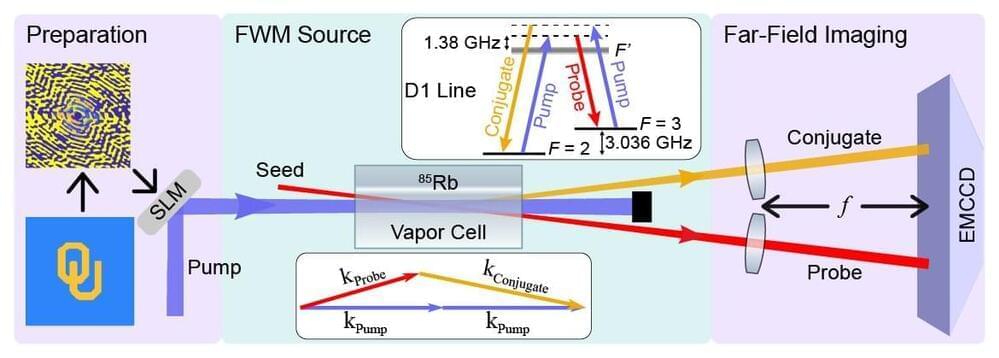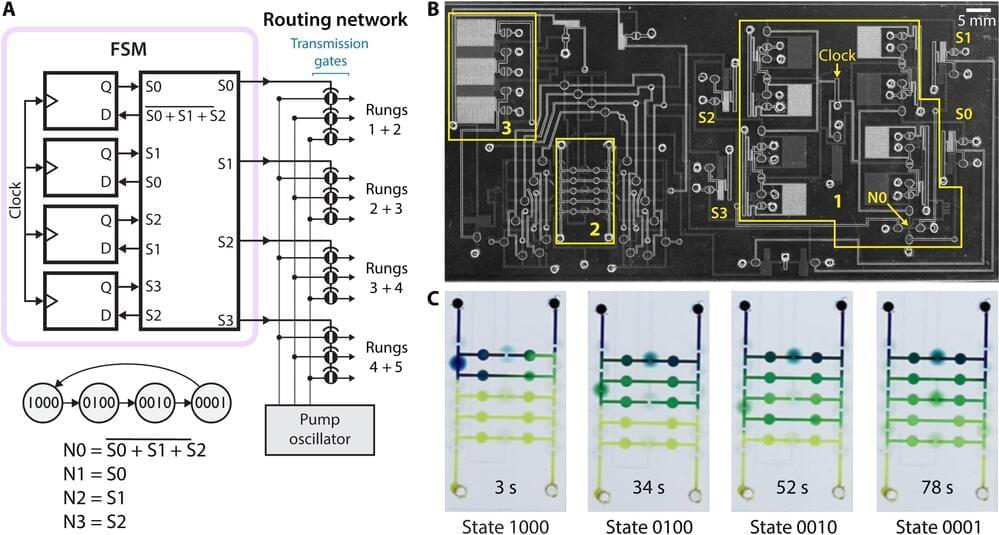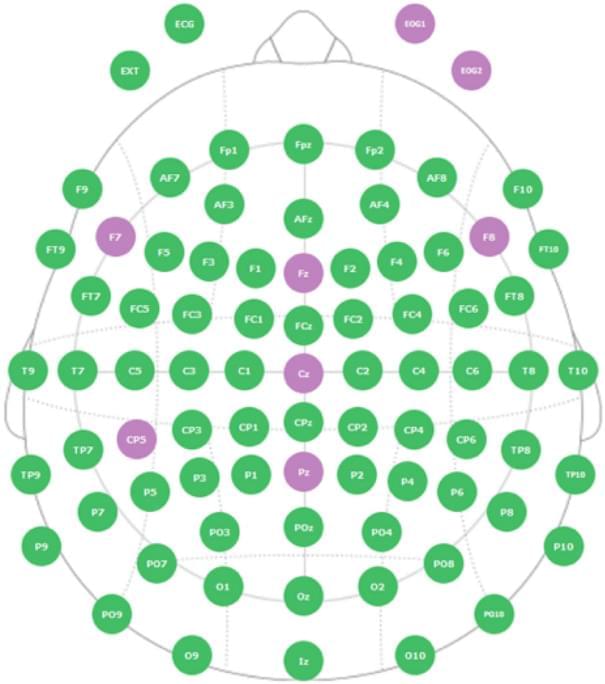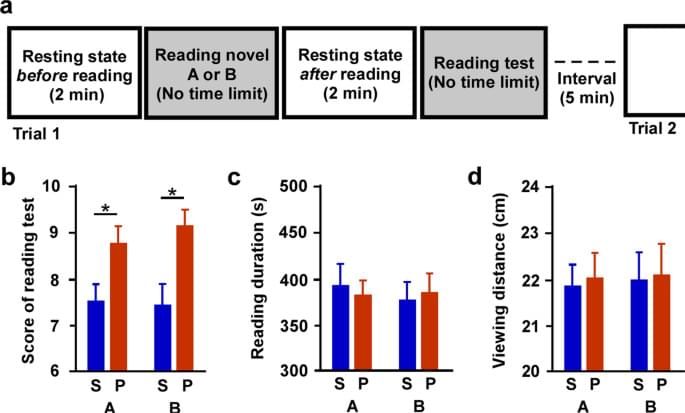Page 1874
Euclid is ESA’s mission to shed light on dark matter and dark energy, but teams at the Agency’s mission control centre in Darmstadt, Germany, are also in the dark. A series of problems have befallen the mission in pre-launch simulations.
Currently about halfway through the Euclid simulations campaign, the key focus in the Main Control Room is the Launch and Early Orbit Phase (LEOP) and spacecraft commissioning.
These are the two most critical moments in a mission’s life; as it wakes up after the rigours of launch, makes its first manoeuvres towards its target destination and as its instruments are commissioned.
Jun 6, 2023
“Genotoxic” Warning: Chemical Found in Common Sweetener Damages DNA
Posted by Paul Battista in categories: biotech/medical, chemistry, genetics
Sucralose, a widely used artificial sweetener, produces a DNA
DNA, or deoxyribonucleic acid, is a molecule composed of two long strands of nucleotides that coil around each other to form a double helix. It is the hereditary material in humans and almost all other organisms that carries genetic instructions for development, functioning, growth, and reproduction. Nearly every cell in a person’s body has the same DNA. Most DNA is located in the cell nucleus (where it is called nuclear DNA), but a small amount of DNA can also be found in the mitochondria (where it is called mitochondrial DNA or mtDNA).
Jun 6, 2023
Researchers demonstrate secure information transfer using spatial correlations in quantum entangled beams of light
Posted by Paul Battista in category: quantum physics
Researchers at the University of Oklahoma led a study recently published in Science Advances that proves the principle of using spatial correlations in quantum entangled beams of light to encode information and enable its secure transmission.
Light can be used to encode information for high-data rate transmission, long-distance communication and more. But for secure communication, encoding large amounts of information in light has additional challenges to ensure the privacy and integrity of the data being transferred.
Alberto Marino, the Ted S. Webb Presidential Professor in the Homer L. Dodge College of Arts, led the research with OU doctoral student and the study’s first author Gaurav Nirala and co-authors Siva T. Pradyumna and Ashok Kumar. Marino also holds positions with OU’s Center for Quantum Research and Technology and with the Quantum Science Center, Oak Ridge National Laboratory.
Jun 6, 2023
Finite state machine implemented as pneumatic circuit using microfluidic valves to create lab-on-a-chip
Posted by Shailesh Prasad in category: chemistry
A group of biochemical engineers, Siavash Ahrar, Manasi Raje, Irene Lee and Elliot Hui at the University of California, Irvine, has developed a finite state machine (FSM) implemented as a pneumatic circuit using microfluidic valves to build a lab-on-a-chip. Their work is published in the journal Science Advances.
Over the past several years, biochemical and mechanical engineers have been working toward the goal of automating many of the chemical process that are currently done by hand—trained lab technicians using pipettes to determine the concentration of a chemical dissolved in a liquid, for example. Automating such tasks would not only make them less expensive, it could speed things up, potentially offering medical lab results in minutes rather than hours. To that end, engineers have been working toward building what they call a lab-on-a-chip. In this new effort, the research team has applied pneumatics to the problem.
Many chemical processes involve the movement of liquids. The researchers sought to use water pressure instead of electricity when building circuits for use on a potential lab-on-a-chip. They created a tiny sandwich comprising panes of glass as the bread and a sheet of silicone as the interior. But before making their sandwich, they etched the glass panes to allow a liquid to pass through and poked holes in the silicone sheet to connect the channels in the glass panes.
Jun 6, 2023
Engineers Revisit 100-Year-Old Water Valve Design by Nikola Tesla
Posted by Shailesh Prasad in category: futurism
Nikola Tesla’s “valvular conduit” design, also known today as the “Tesla valve”, was patented in 1920. The design, essentially a series of interconnected keychain-shaped loops, was created to enable fluid to pass in only one direction with no moving parts.
Jun 6, 2023
Breath chemical markers of sexual arousal in humans
Posted by Dan Breeden in categories: chemistry, sex
Exhaled breath VOCs showed variations in concentration associated with the different clips, even though the relative change was less distinguishable compared to the genital response (Fig. 3). For female participants, breath levels of CO2 and isoprene during the sex clip were significantly lower compared to the anxiety and sport clips (p 0.05, Table S2). For male participants, CO2, C2H4O2 and C6H6O were found to have a significantly lower, higher and higher breath level, respectively, for the sex clip comparing to the other two clips (p 0.05, Table S2). The relative change of CO2 during the sex clip was in general only 3–4% lower than that during the anxiety and sport clips but was significant for both genders (p 0.05). The minute-by-minute box plot (Fig. 2c) also shows that breath CO2 appears to lower slightly in concentration for both genders during the sex clip. Isoprene was significantly decreased during the sex clip compared to the sport clip for both genders (males:13%, females:15%, p ≤ 0.001). For women during the sex clip, the isoprene also had a significantly lower level compared to the anxiety clip (12%, p 0.01). For the 1-min data distribution shown in Fig. 2d, participants showed not only elevated isoprene concentration during the sport and anxiety clips but also larger variations among each other reflected by the length of the box representing 25–75% data distribution. Interestingly, isoprene level peaked at the beginning of the sex clip (the second minute) for both genders.
From Fig. 3, it can be seen that several other measured VOCs, C10 H14 O, C7H8O, C8H11 NO2 and acetaldehyde for female participants, and C8H7N for male participants showed large relative changes during the sex clip compared to the anxiety clip and the sport clip. However, no significant difference was identified between the sex clip and the other two clips (Table S2) for these VOCs, indicating the mean values were largely affected by outliers. In such cases, the VOCs identified as having a distinguishable change during the sex clip might be specific to an individual rather than being representative of the whole group of participants. Among the female participants, one subject (No. 39) had substantial elevation of C10 H14 O, C7H8O, C8H11 NO2 in her breath starting in the end of the sport clip until the end of the sex clip, which caused a significant deviation in terms of the mean values. While for acetaldehyde, subject No. 20 had a much higher relative increase compared to the first neutral clip in her breath than other participants, affecting the mean values. For male participants, two persons with a strong physiological response (No. 6 and 10) had substantial elevated breath levels of C8H7N, C6H6O and C7H8O during the sex clip.
Among all participants, several VOCs showed change according to the genital response of certain individual participants (1 female and 2 male participants). Although the data from those participants were considered as outliers in the previous section, as there were no experimental errors identified and the breath-genital related change occurred in different clip playing order, it is unlikely that those outliers coincidentally followed the genital response pattern. Furthermore, genital response and genital temperature data was rated highly in terms of quality for those individuals. Therefore, we may use these individuals to characterize the breath marker responses for each gender in real time.
Jun 6, 2023
Children with autism spectrum disorder show atypical electroencephalographic response to processing contextual incongruencies
Posted by Dan Breeden in category: robotics/AI
The ERP literature has also reported findings on the P600 in the context of language processing. This ERP component is commonly observed in the 500–900 ms time window, with a parietal topography57. The P600 component was initially thought to reflect manipulation of syntactic information57, but has since been associated with conflict monitoring58,59,60. The P600 response can be found in a wide range of syntactic violations such as phrase structure violation61, semantic violations in extended discourse contexts62, subject-verb number agreement63, pronoun case47, verb inflection64 and subjacency65. The P600 response has been consistently associated with capturing differences between syntactically congruent relative to incongruent syntactic structures (e.g.,27,66,67. It has been debated, however, whether the P600 responses seen in these cases are specialized for syntax processing or instead linked to a more general domain process such as attention, context updating or learning27,47,68,69. Fitz and Chang 70 proposed a model presenting P600 as the prediction error at the sequencing layer of a neural network. Their studies have shown that the recorded ERP components could be the result of learning processes, that helps in the adaptation process to new inputs.
These studies have also suggested that P600 reflects an integration process in the comprehension of the visual world. Sitnikova et al.71 presented movie clips of real-world activities with two types of endings: congruent and incongruent with the context. Their results showed that the violations of the expected event elicited the P600 component, which led them to conclude that the comprehension of the visual real-world required the mediation of two mechanisms reflected by N400 and P600. Differences in language processing in ASD individuals are also reflected in the P600 amplitude and latency. When exploring linguistic violations, the group with ASD presented longer reaction times72 and broader distributed P600 effects73. P600 variations were associated with higher attentional cost and compensatory strategies. However, studies assigning the P600 response exclusively to incongruency in individuals with ASD remain scarce.
Due to the mixed results commonly found in studies of ASD, it is important to identify the paradigms capable of identifying differences in the neural responses to contextual language processing. In our study, we aim to investigate brain processing in children with ASD related to difficulties in the interpretation of language in context. To achieve this, we studied the detection of context incongruencies. We applied a task that demanded integrating visual and auditory information to assess whether a sentence contradicts the context (incongruent condition) or matches the context (congruent condition). The incongruent condition included two different categories: i) incongruent trials with sentences that are grammatically correct, and ii) incongruent trials with sentences that are grammatically incorrect presenting semantic mistakes. We used a 2 × 2 design with images (context) accompanied by an oral description (language) that could be either congruent or incongruent with the image. We examined the ERP waves amplitudes for N400 and P600 components and studied the differences across children with ASD and typically developing controls. We assessed group differences and differences between the two conditions within the groups. We hypothesized that individuals in the typically developing group would detect the incongruencies and, in response, present significantly higher N400 and P600 amplitudes on the incongruent conditions compared to the congruent conditions. We also expected the ASD group to have difficulties detecting the incongruencies between the context and the description. When investigating group differences, we expected to find significant differences in the amplitudes of the N400 and P600 ERPs on the incongruent conditions, with larger ERP amplitudes in the non-autistic group.
Jun 6, 2023
Reading on a smartphone affects sigh generation, brain activity, and comprehension
Posted by Dan Breeden in categories: biotech/medical, mobile phones, neuroscience
This study provides a new perspective on the relationship between the visual environment and cognitive performance, based on the results of path analysis (Supplementary Fig. 5). Regarding reading on a paper medium, moderate cognitive load may generate sighs (or deep breaths) and appears to restore respiratory variability and control of prefrontal brain activity. In contrast, reading on smartphones may require sustained task attention34, and acute cognitive load may inhibit the generation of sighs, causing overactivity in the prefrontal cortex. Sighing has been found to be associated with various cognitive functions13,27,28, and may reset respiratory variability36,37. This reset may also be associated with improved executive functions14.
The current study has several limitations. First, our experiment did not entail any measurement of subjective cognitive load. Based on the differences in the number of sighs and brain activity between reading on smartphones and paper media, it is highly likely that there might have been a difference in cognitive load as well. In future, it is necessary to assess cognitive load indices and examine the relationship between breathing and brain activity. Second, we did not control the movements when turning pages or pointing movements to maintain the focus of attention on the text. These bodily movements may have had some influence on the present index. In the future, such physical limitations should be taken into consideration.
The results of this study suggest that reduced reading comprehension on smartphone devices may be caused by reduced sighing and overactivity of the prefrontal cortex, although the effect on electronic devices other than smartphones has yet to be confirmed. Recent reports indicate that the use of smartphones and other electronic devices has been increasing due to pandemic-related lockdowns, and there are indications that this is negatively influencing sleep and physical activity38,39. The relationships among visual environment, respiration/brain activities, and cognitive performance detected in this study may indicate one of the negative effects of electronic device use on the human body. If the negative effects of smartphones are true, it may be beneficial to take deep breaths while reading since sighs, whether voluntary or involuntary, regulate disordered breathing36.
Jun 6, 2023
Schooling substantially improves intelligence, but neither lessens nor widens the impacts of socioeconomics and genetics
Posted by Dan Breeden in category: genetics
Schooling, socioeconomic status (SES), and genetics all impact intelligence. However, it is unclear to what extent their contributions are unique and if they interact. Here we used a multi-trait polygenic score for cognition (cogPGS) with a quasi-experimental regression discontinuity design to isolate how months of schooling relate to intelligence in 6,567 children (aged 9–11). We found large, independent effects of schooling (β ~ 0.15), cogPGS (β ~ 0.10), and SES (β ~ 0.20) on working memory, crystallized (cIQ), and fluid intelligence (fIQ). Notably, two years of schooling had a larger effect on intelligence than the lifetime consequences, since birth, of SES or cogPGS-based inequalities. However, schooling showed no interaction with cogPGS or SES for the three intelligence domains tested.


















